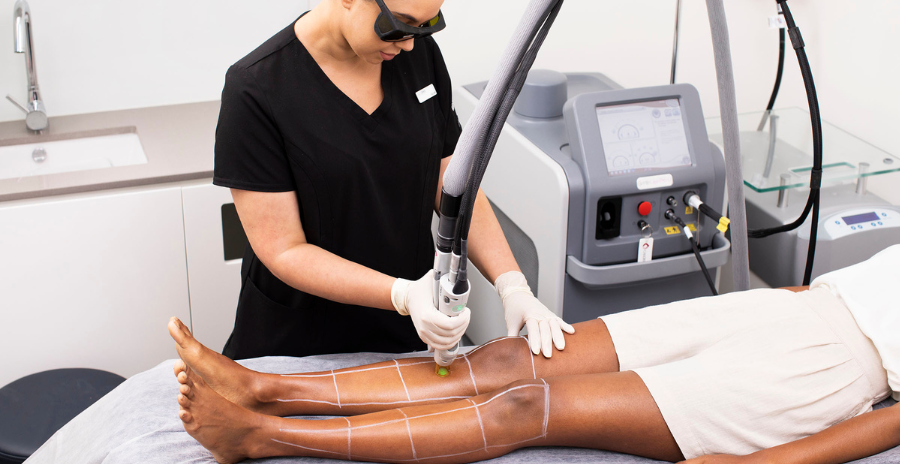
Laser treatment clinics have gained popularity as effective solutions for various cosmetic and medical conditions. Whether you seek hair removal, skin rejuvenation, or treatment for specific skin disorders, these clinics are designed to meet diverse health and beauty needs. In this article, we will explore the types of services offered at laser treatment clinics, the technologies employed, what patients can expect during treatments, potential risks, recovery time, and essential tips for choosing the right clinic. Understanding these elements can significantly improve your treatment experience and results.
Types of treatments available
Laser treatment clinics provide various services, addressing multiple concerns. The most well-known treatments include:
- Hair Removal: Laser hair removal targets hair follicles, reducing unwanted hair growth over time. It is suitable for various skin types and hair colors, making it a versatile option for many.
- Skin Rejuvenation: Treatments like fractional laser resurfacing help improve skin tone, texture, and firmness. These procedures can minimize wrinkles, fine lines, and sun damage.
- Tattoo Removal: Specialized lasers can break down tattoo ink particles, leading to gradual fading or complete removal. Multiple sessions are usually needed.
- Acne and Scar Treatment: Lasers can help reduce acne scars and improve skin clarity by targeting the underlying issues, promoting skin healing.
- Pigmented Lesion Removal: For those with age spots or other pigmentation concerns, lasers can efficiently target and diminish these spots.
Each treatment has its unique benefits and is tailored to specific patient needs, ensuring personalized care.
How laser technology works
Laser technology involves the use of focused light to target specific areas of the skin or underlying tissues. In laser treatment, different wavelengths of light are employed, each corresponding to the type of treatment required. For instance:
- Ablative lasers remove layers of skin, making them effective for resurfacing and complex skin issues.
- Non-ablative lasers penetrate deeper into the skin without disrupting the surface, promoting collagen production and treating concerns like wrinkles.
- Nd:YAG lasers are often used for hair removal and vascular lesions, known for their depth penetration and effectiveness across skin types.
During a treatment session, patients may experience a warming or mild stinging sensation, often compared to the snap of a rubber band. Advanced technology includes cooling devices and numbing creams to enhance comfort.
What to expect during your visit
Visiting a laser treatment clinic can be an overwhelming experience, especially for first-time patients. Understanding what to expect can ease anxiety and enhance the experience. Typically, the visit will involve:
- Consultation: The first step is a detailed consultation where a qualified professional will assess your condition, discuss your goals, and recommend suitable treatments. Raise any questions or concerns during this session.
- Patch Testing: For sensitive skin or new patients, patch tests may be performed to gauge skin reaction before a full treatment.
- Treatment Session: Depending on the procedure, sessions can last anywhere from 30 minutes to two hours. Expect pre-treatment preparations, such as cleaning the treatment area and possibly applying numbing cream.
- Post-Treatment Care: You’ll receive aftercare instructions tailored to your treatment type. It’s essential to follow these guidelines for optimal results and recovery.
Potential risks and recovery
While laser treatments are generally safe, understanding potential risks is crucial for informed decisions. Some common side effects may include:
- Redness or irritation at the treatment site, resembling a mild sunburn, usually fades within hours to days.
- Swelling, although usually temporary, can occur post-treatment, particularly after resurfacing procedures.
- Changes in pigmentation—darkening or lightening of treated skin—might occur but often resolve over time.
Recovery times vary based on treatment intensity. Non-ablative treatments typically have minimal downtime, while ablative treatments may involve several days of healing. Patients should avoid direct sunlight, applying heavy makeup, or strenuous exercise during recovery. Always consult with a professional before proceeding with any treatment to weigh the benefits against potential risks.
Choosing the right laser treatment clinic
Selecting a laser treatment clinic can feel daunting. Here are key factors to consider when making your choice:
- Credentials: Ensure the clinic is staffed with qualified professionals, including board-certified dermatologists or licensed technicians experienced in laser treatments. Ask about their qualifications and training.
- Technology: Inquire about the types of lasers used and the technology’s efficacy. Advanced clinics should invest in FDA-approved, up-to-date equipment.
- Reputation: Look for reviews and testimonials from past clients. Direct recommendations from trusted friends or family can also be invaluable.
- Consultation Process: A reputable clinic will offer a thorough consultation, evaluating your needs and explaining procedures clearly, without any pressure to proceed immediately.
- Aftercare Support: A well-rounded clinic should provide clear aftercare instructions and be available for follow-up consultations post-treatment.
Taking time to research and evaluate options can lead you to a clinic that aligns with your expectations and needs.
Laser treatment clinics offer innovative solutions for various cosmetic and medical challenges, from hair removal to skin rejuvenation. With advancements in technology, these clinics have become accessible and popular among diverse populations. Understanding the different treatment types can empower potential patients to make informed choices. Furthermore, knowing what to expect during visits, recognizing possible risks, and having the right information to select a reputable clinic enhance the overall experience. By embracing these insights, individuals can navigate their journey toward healthier skin and heightened confidence. As the industry evolves, more exciting advancements are anticipated, making it an excellent time to explore what laser treatments can offer.
